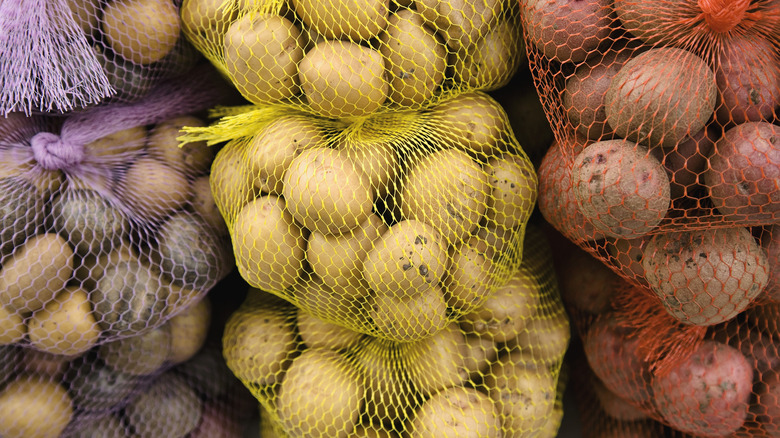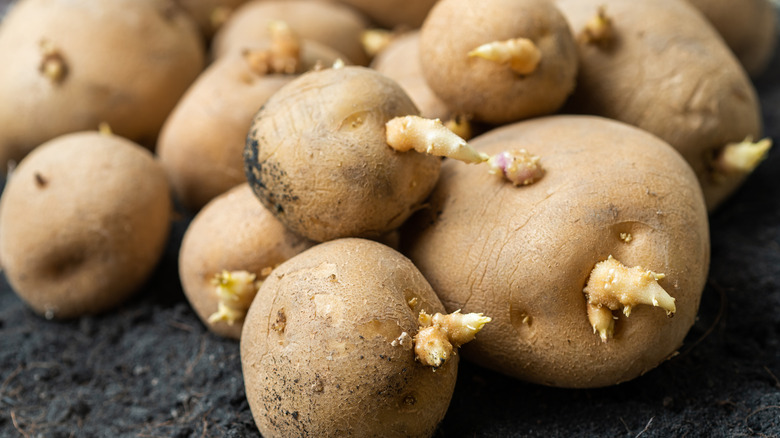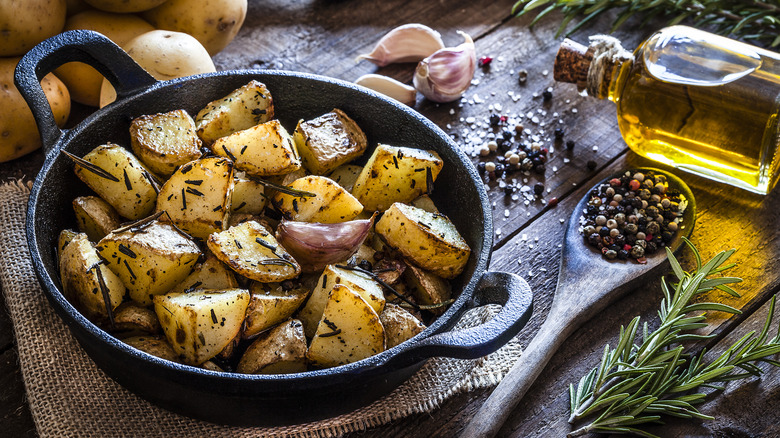Is It Ever Safe To Eat Wrinkled Potatoes?
A highly versatile vegetable, potatoes of all varieties are a staple in most home pantries. Many home chefs have encountered unsightly features on their potatoes, such as wrinkling. In such cases, it's best to avoid using these wrinkled spuds to prevent potential health risks. Changes in a potato's texture, including wrinkling, often indicate that the vegetable has started to deteriorate and should be discarded.
As potatoes spoil, the concentration of an alkaloid compound called solanine increases. According to Michigan State University Extension, consuming a large amount of potatoes rich in solanine elevates the risk of foodborne illness; this toxin can cause stomach upset, vomiting, and diarrhea when ingested in significant quantities. Moreover, solanine gives the potatoes an unpleasant taste that's hard to miss, making your usually delicious potatoes a bit off-putting in the flavor department. A wrinkled exterior and foul taste are among the various indicators that suggest potatoes should be thrown away.
Other signs that a potato is passed its prime
Wrinkled skin is just one of many indicators that a potato is no longer safe to eat. Along with its impact on texture, an elevated concentration of solanine can cause the potato to develop a green hue. Spoiled potatoes may also emit an unpleasant, mold-like odor. In addition to wrinkling, rotten potatoes will feel softer than usual.
As for sprouts — those small bumps or growths that appear on the potato's skin — they aren't always a sign that the vegetable should be discarded. If you're confident that the sprout is a recent development, it's generally safe to remove the affected area and proceed with cooking the potato as you usually would. However, be aware that sprouts indicate that your potato is not long for this world; in fact, it's decaying. Therefore, it's advisable to use sprouted potatoes as soon as possible to prevent any adverse effects, including a less-than-delicious meal.
How to keep your potatoes fresh for longer
The way you store potatoes in your kitchen significantly affects their longevity. The temperature of the storage area is crucial; potatoes are best kept in temperatures ranging from 45 to 50 degrees Fahrenheit. Warmer temperatures will speed up the decay process, causing the potatoes to spoil before you have a chance to use them. Additionally, you should shield the potatoes from light, which can accelerate the development of sprouts and green spots. Conversely, storing potatoes in a refrigerator can adversely affect their texture, potentially leading to an unwanted sweetness due to the cold temperatures.
Interestingly, storing potatoes alongside other vegetables can also hasten their spoilage. Although they pair well in recipes — such as in this potato gratin with onions and sage — onions and potatoes should be stored separately in your pantry. Onions release an excess of ethylene, a hormone that triggers the ripening of certain fruits and vegetables. When stored near onions, potatoes will ripen more quickly and deteriorate faster. When stored properly, potatoes can remain fresh and tasty for months.


